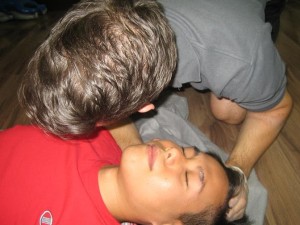A third degree burn are also called as full thickness burns and are said to be the worst kinds of burns as they result to most damage to the skin. The skin has two layers: the epidermis (outer layer) and dermis (inner layer), where the nerves and capillaries are located. Beneath the dermis is a subcutaneous layer of fatty tissues that contains arterioles and muscles. In third degree burns, the epidermis, dermis and subcutaneous layers are all destroyed and because of this, there is almost no pain perceived because the nerve endings have already been destroyed.
Causes of a Third Degree Burn
Third degree burns are also caused by those that result to first degree and second degree burns, however, in a third degree burn, they are usually exposed for a longer period of time.
- Flames from a fire
- Direct contact with a hot object for a prolonged time
- Scalding liquid
- Chemicals
- Electrical appliances
Signs and Symptoms of a Third Degree Burn
Each individual may experience the signs and symptoms of a third degree burn differently but the most common ones include:
- Skin that may be white and white, yellow, dark brown or charred black
- Skin that is leathery, elevated and dry
- Swelling
- Absence of pain
First Aid Treatment and Management for a Third Degree Burn
Without proper medical help, large, a third degree burn can heal poorly and thus may take some time. Because of the extent of damage to the skin, there is slow healing of the new skin and there is usually a scar that is formed. The presence of scars can hinder function. A skin graft is typically required for the wound to close.
Thus, it is recommended to seek immediate medical attention when one suffers from third a third degree burn. However, one can apply first aid learned by taking First Aid Courses while waiting for the local emergency services to arrive. A third degree burn is considered a major burn and should be treated as such:

- After calling for local emergency services, ensure that the individual is protected from further harm
- Monitor for breathing and circulation. Begin CPR if necessary
- Items that are restrictive, such as belts and jewelries, especially those that are around the neck, should be removed.
- Elevate the burned area. Cover it with a moist and cool sterile cloth. Do not immerse the burned area in cold water to avoid complications from developing.
Complications from a Third Degree Burn
Although a first degree and second degree burns may also lead to the development of complications, a third degree burn is the one most at risk. These complications can include:
- Scars
- Keloids
- Blood loss
- Infection that may lead to sepsis
- Tetanus
- Hypothermia (low body temperatures)
- Hypovolemia (low blood volume)
- Shock
- Death
A third degree burn is the most severe burn as it causes most damage to the layers of the skin. Immediate medical attention should be given to victims of a third degree burn at all times.
Online Sources
http://www.urmc.rochester.edu/encyclopedia/content.aspx?ContentTypeID=90&ContentID=P01760
